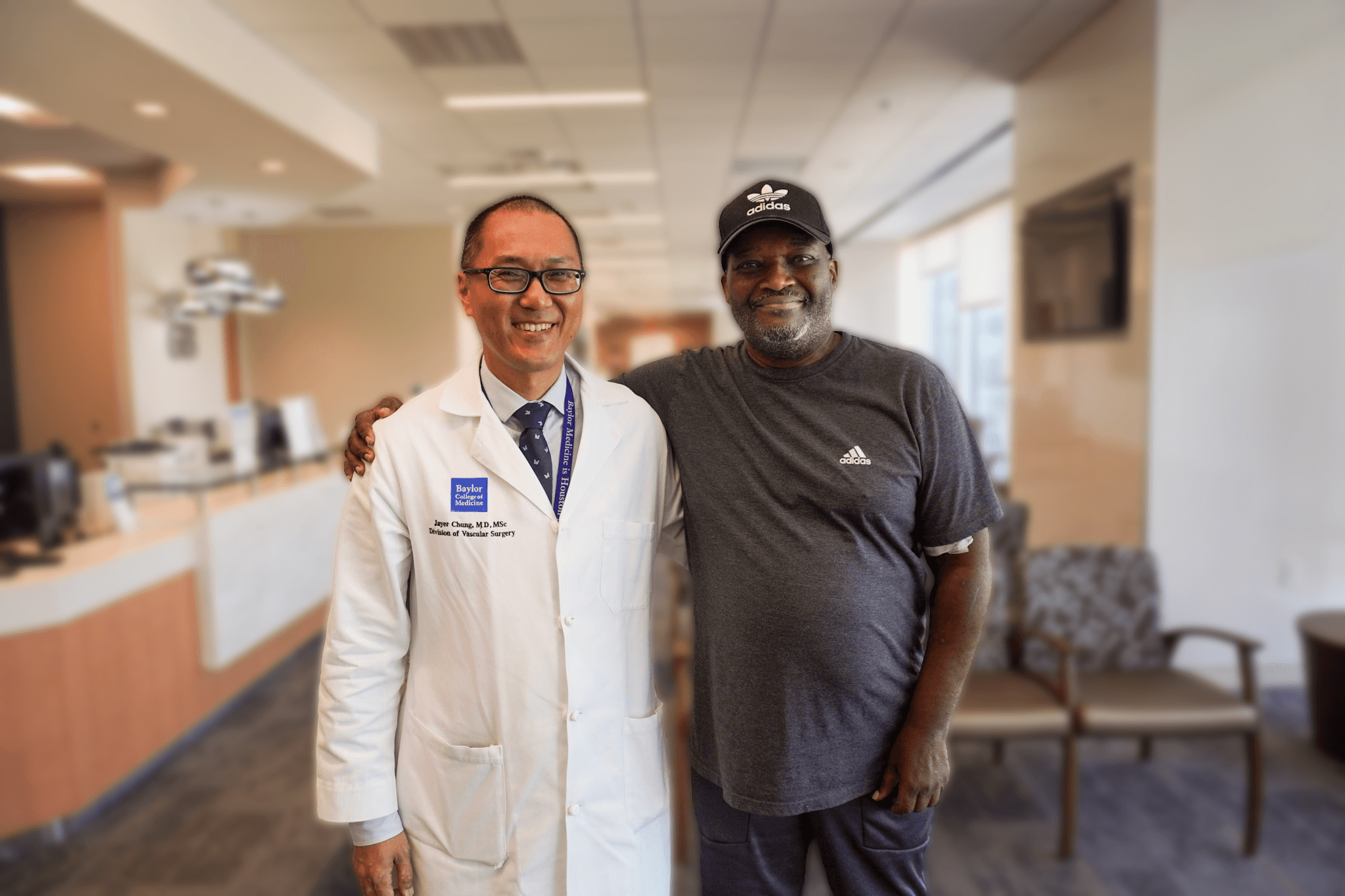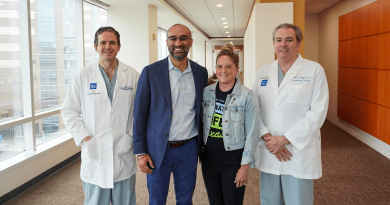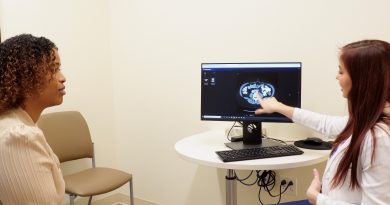Baylor Medicine surgeon’s intervention saves patient’s leg

Patrick Walker, a patient with diabetes and vascular disease, had been fighting an infection in his right foot for a while. In fact, he had already lost a few toes on his foot and was in the hospital for another infection that had gotten into his blood when he was told he would need his right leg amputated. After asking for another opinion, Walker was referred to Dr. Jayer Chung, a Baylor Medicine vascular surgeon who is part of the Save the Extremity Program. This exceptional team includes wound care specialists, vascular surgeons and podiatrists.
“Dr. Chung told me there was a 50% chance I would lose the leg, but he would do whatever he could to save it,” Walker said. “It made us nervous, but I would rather take a chance than no chance and I trusted him.”
Vascular disease, which affects the arteries and veins, is a common and serious complication of diabetes. High blood sugar levels can cause the walls of blood vessels to become thick and less flexible, reducing blood flow and increasing the risk of blockages. This can lead to conditions such as peripheral artery disease (PAD), which can cause pain, ulcers and even amputation if left untreated.
“The link between diabetes and vascular disease is profound,” Chung said. “Managing blood sugar levels is crucial, but equally important is monitoring vascular health to prevent severe complications that can severely impact a patient’s quality of life.”
Chung remembers Walker’s condition was dire. Though he had seen multiple other physicians and undergone several treatments, Walker was in danger of losing his leg.
“When I examined Mr. Walker, it was clear he needed intervention to save his leg. And I’m proud to report we had a great outcome.”
Walker needed a dorsalis pedis (DP) bypass, a surgical procedure used to restore blood flow to the foot in patients with PAD or other conditions that cause severe blockages in the arteries of the lower leg. The DP bypass specifically targets the dorsalis pedis artery, which is located on the top of the foot and plays a crucial role in supplying blood to the foot and toes.
During the procedure, a vascular surgeon creates a bypass around the blocked or narrowed segment of the artery by using either a vein from another part of the patient’s body or a synthetic graft. The graft is connected to a healthy artery above the blockage and routed to the dorsalis pedis artery, thus rerouting blood flow around the obstruction and improving circulation to the foot.
“The primary goal of a DP bypass is to alleviate symptoms such as pain, non-healing ulcers and the risk of amputation, thereby enhancing the patient’s mobility and quality of life,” Chung said.
After a six-hour DP bypass surgery, Walker went home to have a home health visit to change and dress the wounds on his leg and foot. After several months, Walker’s wounds had all healed. Today, Walker can walk and is grateful for Dr. Chung’s work in saving his leg.
“I thank Dr. Chung just for his knowledge,” Walker said. “He had enough courage to go in there and save my leg. Between God and him, my leg was saved.”
Walker’s wife, Ezalia Walker, is also full of gratitude and tells everyone she knows with diabetes or vascular issues to go to the Baylor clinic. She also warns friends and acquaintances against waiting too long.
“Some black men wait too long to go to the doctor,” Ezalia said. “There are so many people we know who were hiding their wound[s] from their [wives] and when they finally went to the doctor, it was too late. Get to an orthopedic doctor and the Baylor vascular clinic as soon as possible!”
If you need to reach Dr. Chung or another expert in the STEP program, call 713-798-5700.
Learn about Baylor Medicine Vascular Health.
By Tiffany Harston, communications associate with the Michael E. DeBakey Department of Surgery



